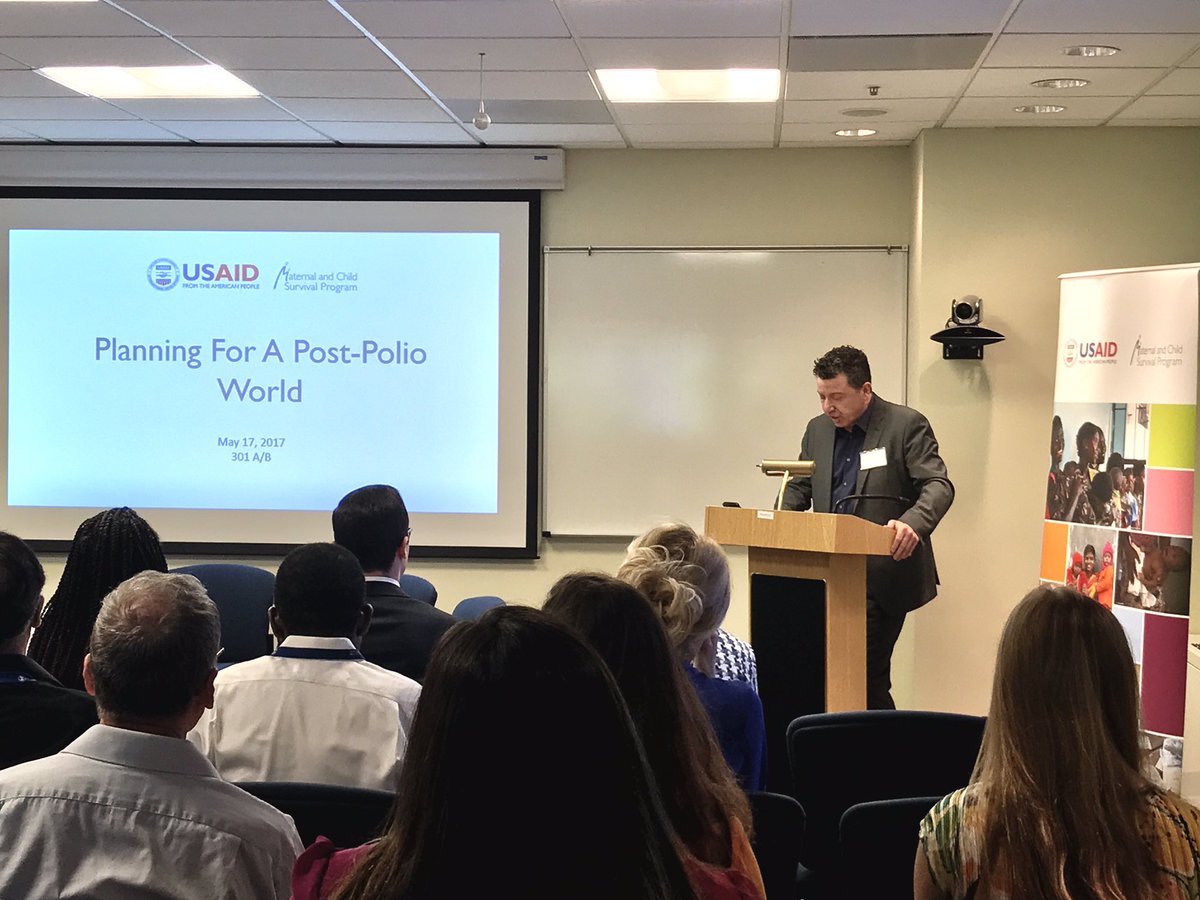Planning for a Post-Polio World
"The fight to eradicate polio has taught many hard lessons, not the least of which is the danger of overconfidence."
On May 17 2017, the United States Agency for International Development's (USAID) Bureau for Global Health's flagship Maternal and Child Survival Program (MCSP) hosted a panel discussion on the Global Polio Eradication Initiative (GPEI)'s role in a post-polio world. There is a real possibility that 2017 could be the year we interrupt circulation of the wild polio virus, although the virus is tenacious, and its last reservoirs are within some of the most difficult places in the world to work.
The event recorded in this video was moderated by Silvio Waisbord, Associate Director, Professor of Media and Public Affairs at the School of Media and Public Affairs, The George Washington University. The panel discussion featured:
- Ellyn Ogden, USAID, Worldwide Polio Eradication Coordinator - Click here for her 29-slide presentation, "Getting to Zero: On the Verge of Polio Eradication [PDF]". Toward the end of her talk, Ogden explores programme risks (e.g., community trust in vaccines; complacency) and reasons for optimism (e.g., evidence-based communications; technology (geographic information systems (GIS), mobile phones/remote monitoring, baby registries); and country-led efforts and ownership).
- Ellen Coates, Former Director of CORE Group Polio Project and Member of the Laos PDR Polio Outbreak Assessment Team
- Chris Millard, Program Manager and Research Associate, Global Health Policy Center at the Center for Strategic and International Studies, and author of several papers on the polio programme - Click here for his 18-slide presentation, "Polio Eradication: Oversight and Transition - Maintaining Focus while Looking to the Future [PDF]". Among other topics, Millard explores transition in action through the lens of the India experience, noting that, over the past several years since the country's removal from the polio-endemic list, Indian health officials have collaborated with international polio programme partners to raise childhood immunisation rates, which has included social mobilisation and micro-planning techniques developed for polio.
- Dr. Folake Olayinka, Immunization Team Lead, Maternal and Child Survival Program - Click here for her 7-slide presentation, "Reflecting on the Importance of Reaching Every Child and the Importance of Mainstreaming Best/Useful Practices from Polio Eradication for Broader Health: MNCH, TB, Malaria, Global Health Security: An Implementation Perspective [PDF]". Olayinka examines useful practices from polio eradication, including in the area of communication. An example of such a practice is community mobilisation, which has been a central part of polio eradication - with mobilisers in communities engaging in community dialogues, house-to-house delivery of key messages. To translate to other health interventions, community mobilisers need to be retooled with right messages. This requires multiple contacts and more complex messaging in the areas of routine immunisation, key household practices, and water, sanitation, and hygiene (WASH). Mobilisers can conduct registration of newborns, pregnant women, and children under 5, as well as undertake immunisation tracking.

Email from Liz Eddy to The Communication Initiative on July 12 2017. Image credit: MCSP
- Log in to post comments
